

Damion Smy
Boxy new KGM Musso unveiled to take on HiLux and Ranger ahead of Australian launch
14 Hours Ago
A policy designed to improve supply of affordable electrified vehicles is edging closer, but the process is protracted. Here's the latest.

Senior Contributor
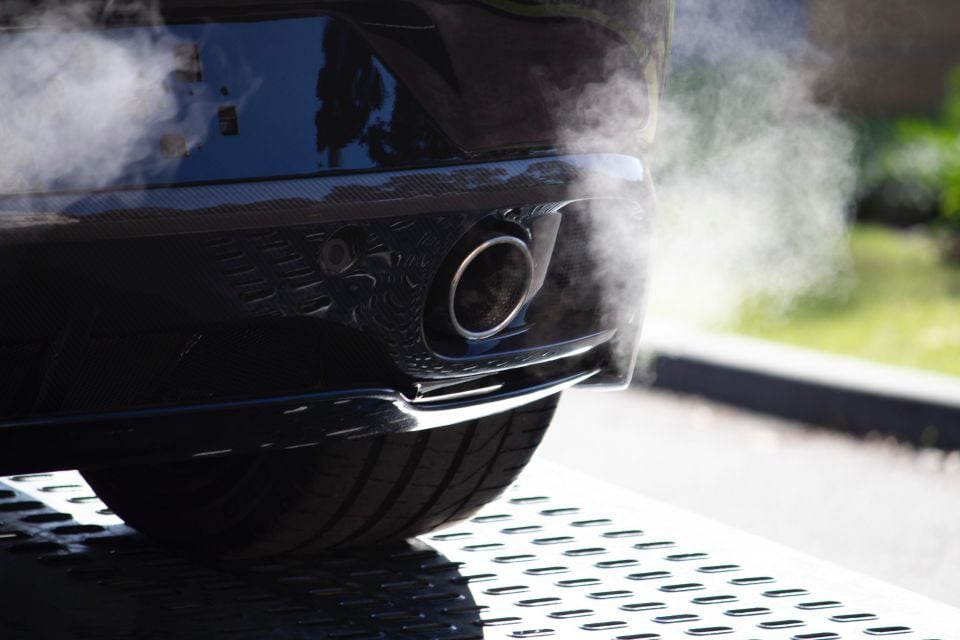

Senior Contributor
The Australian Government’s proposed Fuel Efficiency Standard (FES), a mechanism designed to make lower-emissions hybrid and electric vehicles cheaper and more plentiful, is inching closer to reality.
The Department of Infrastructure and Transport this week revealed it had received about 2700 submissions to a consultation paper published on April 19 and closed-off on May 31, coming from the general public and stakeholder organisations.
About 1200 of these submissions were released publicly today, which “overwhelmingly support” the introduction or imposition (depending on your view) of an FES.
These will be used to inform an impact analysis, with the government promising to detail its preferred FES model before the end of 2023.
When the proposed legislation arrives, it will still need to clear through both houses of parliament before being signed into law.
Australia is one of very few countries of similar economic standing without fuel efficiency standards, which punish car manufacturers should their new vehicle average CO2 emissions exceed an agreed, imposed limit.
In fact more than 85 per cent of the global car market already has a form of FES, so there are clear templates already there.
The US, the EU, China and New Zealand are examples of countries or regions that already have a version of what Australia is still working towards. As the government and industry stakeholders are fond of pointing out, Australia is one of few countries without an FES alongside global pariah Russia.
“The response to our FES consultation reinforces overwhelming support for the Government’s position: Australia needs fuel efficiency standards that make us competitive with other parts of the world for cleaner, cheaper-to-run cars,” claims Minister for Climate Change and Energy Chris Bowen.
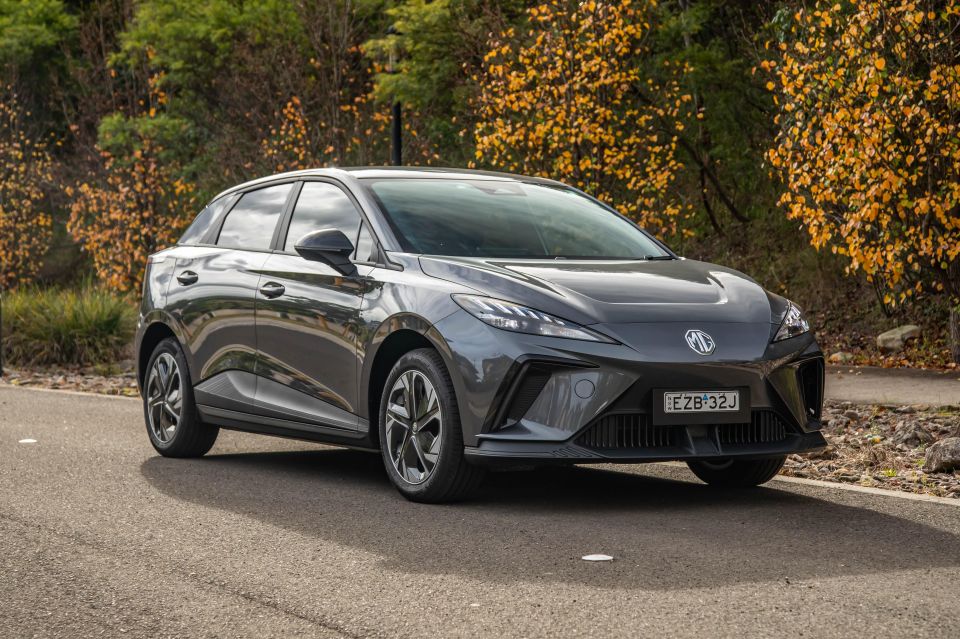
Minister for Infrastructure, Transport, Regional Development and Local Government Catherine King added “Australia has lagged behind international vehicle markets, meaning Australians miss out on a range of overseas models and the benefits they bring”.
“Thank you to everyone who took the time to have their say – I look forward to continuing to work across government, industry and communities to progress a FES that will make a real difference for Australia.”
How does an FES typically work, and what’s the goal?
The core idea is to push multinational carmakers to divert greater factory supply of their CO2-reducing electrified vehicles to Australia in order to avoid penalties for exceeding range-wide average emissions, which usually come in the form of fines.
Over time, as the fuel efficiency standard is tightened (meaning the maximum amount of CO2 that can be emitted is reduced), carmakers must sell higher numbers of lower and zero-emissions vehicles to avoid ratcheted penalties.
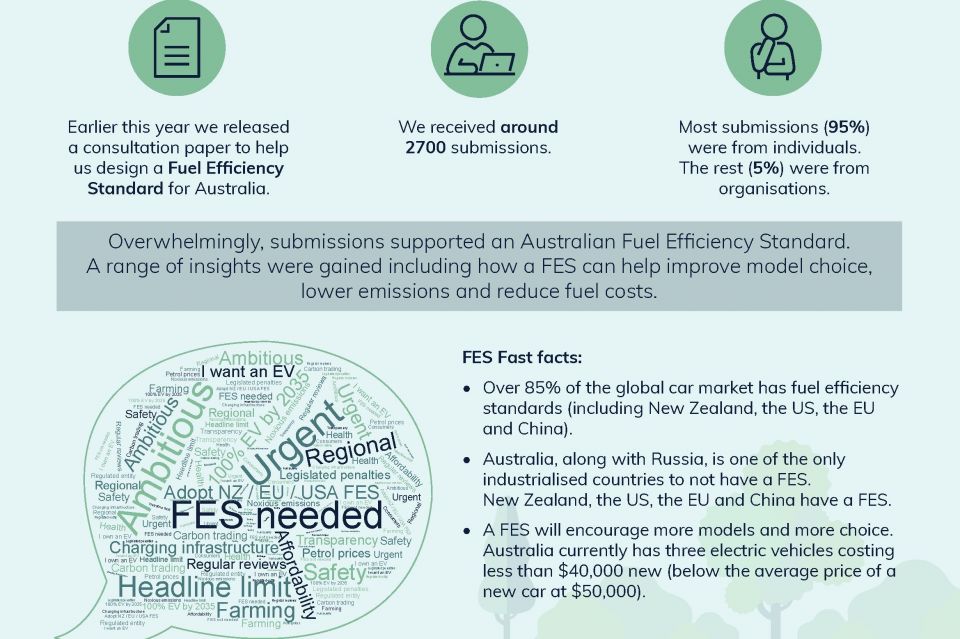
This situation is commonly chalked up as one key reason why car brand executives based here keep failing to secure sufficient stock of their EVs and hybrids to meet burgeoning demand from buyers keen to slash their fuel bills and CO2 footprint.
Such a supply-side situation has an upward pressure on EV prices and slows their proliferation. That being said, the rollout of China-made EVs at scale and with keen pricing – think MG 4, GWM Ora, BYD Atto 3 and Tesla Model Y – shows the market mechanisms in place and latent demand already have some impact with or without a FES.
Sales of EVs have grown almost five-fold this year. Between January and July Australians took delivery of 49,938 EVs and 52,375 hybrids and PHEVs – about 16 per cent of the light-vehicle market (everything bar big trucks and buses).
While the majority of submissions to the FES discussion paper came from private individuals, here are some thoughts from influential industry lobbies and corporations with an outsized influence on policy.
MORE: All the electric cars coming to Australia

The Federal Chamber of Automotive Industries, peak body for Australia’s car brands, created its own voluntary FES scheme a few years ago, but at the same time has been accused of rival groups, and one think tank, of a “strategic, coordinated campaign to push back against Australian climate policy”.
Regardless, FCAI chief executive Tony Weber said today the body “fully supports the introduction of an ambitious but achievable, technology agnostic FES that it is designed and implemented with a focus on the Australian consumers’ needs”.
“The exact form of a fuel efficiency standard needs to consider the model cycle time frames to bring more fuel-efficient vehicles into Australia and the level of financial and non-financial support from the government,” he said.
“Across the world, this partnership of industry and government has been crucial to the development of low-emission vehicles.
“Most importantly, any policy that does not bring consumers along the path of reform will, by definition, fail. Key to the transition for consumers is the availability of product that they want or need at an affordable price.”
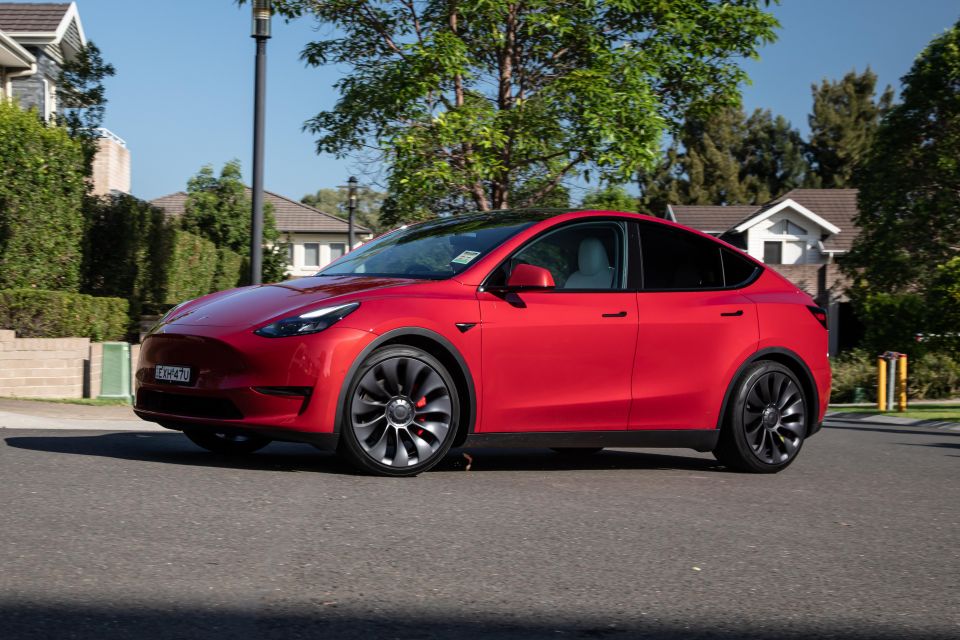
The FCAI adds its members – which include makers of vehicles ranging from electric through to petrol and diesel engines – want to “play their role in combating climate change and providing Australians with the zero and low-emission vehicles they can afford, want to drive and vehicles that meet their family, personal, recreation or work needs”.
The ultimate aim of the FES, it adds, should be to decarbonise the light vehicle sector in the most efficient and effective way, and in an Australian context.
The subtext here is that focus and attention must be given to get more electric and hybrid utes/pickups and vans here, given these are big-sellers that remain largely diesel.
The Electric Vehicle Council, an influential break-away lobby that advocates a faster transition, detailed a vision in May this year. It wants fuel efficiency standards, which it rebrands as the New Vehicle Efficiency Standard (NVES), to kick off from 2024, with reviews built in for 2026 and 2029.
The headline figure is the goal to achieve at least 50 per cent electric car sales among new light vehicles (passenger cars, SUVs, and light commercials) by 2030, and up to 95 per cent EV sales on new vehicles by the mid 2030s.
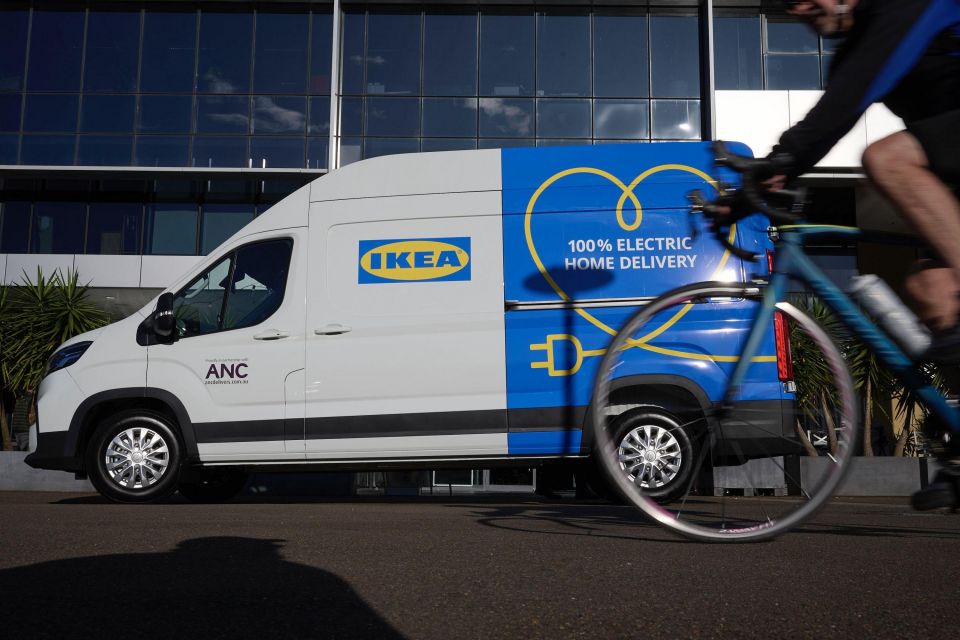
That 50 per cent goal is also part of the Biden Administration’s 2030 target in the USA, while the EU wants to phase out CO2-emitting cars (tailpipe) by 2035.
The EVC said at the time it wanted the penalty rate for brands exceeding the annual average CO2 cap to be “consistent with other major countries”, much like the stringency of CO2 targets, and it’s open to the inclusion of concessions or bonus credits.
It also said carmakers should be provided with the flexibility to bank, trade, and pool these credits with a carry-back period of two years, and a carry-forward period of three years – in line with a review of the standard taking place every three years.
That smooths out the variations across vehicle lifecycles for one thing, and gives brands with lower average CO2 emissions the ability to sell these credits to brands with less green model mixes.

The EVC supports different targets for passenger cars (MA), and off-road 4x4s (MC) and light commercials (NA), as are found in the FCAI’s voluntary CO2 standards, and setting different targets for different size vehicles via a so-called mass limit curve.
“It’s great to see the government backed up by so many insightful submissions, using strong language on the positive impact of strong standards. This is a sharp rebuke to lobbyists pushing for business as usual that will leave Australian motorists paying thousands of dollars at the pump, while the world goes electric and enjoys more efficient, advanced vehicles,” said EVC chief executive Behyad Jafari today.
Meantime, rideshare company Uber in its messaging is a strong proponent of a legislated FES, with its Australia and New Zealand general manager Dom Taylor stating “Australians are pioneers in many areas but our EV adoption is lagging, costing us both environmentally and economically”.
“We need to pick up the pace by adopting ambitious and robust fuel efficiency standards, which usher in a new era of affordable, eco-friendly hybrids and EVs,” Mr Taylor added.
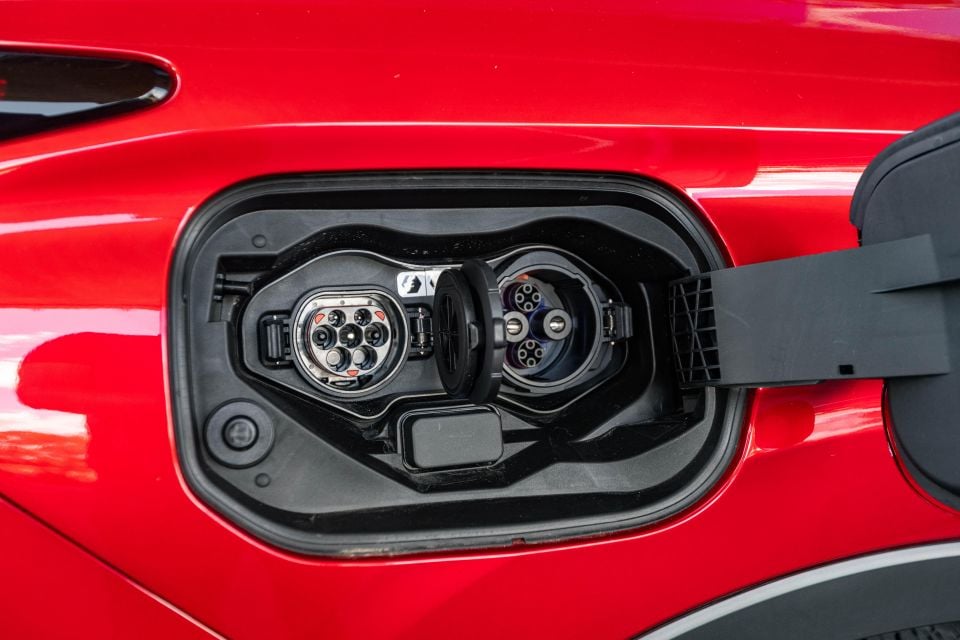
“Uber believes it can have an outsized impact in accelerating the transition to zero emission transport because when rideshare drivers switch to EVs, they realise three to four times greater emissions savings compared to average car owners.
“Australia is currently second-last in OECD EV standards, and we won’t make up ground unless our Government implements a standard which puts us in line with the EU, US and NZ by the end of the decade.”
Other prominent bodies that made submissions to the FES discussion paper include the Australian Automobile Association (lobby group for State-based car clubs such as the NRMA and RACV), the Australian Automotive Dealer Association (AADA), the Australian Manufacturing Workers Union (AMWU), and the Australian Renewable Energy Agency (ARENA).
You can read the full published list of submissions at the government’s landing site here.
MORE: National EV strategy paper nets more than 500 submissions


Damion Smy
14 Hours Ago


Damion Smy
15 Hours Ago


Damion Smy
17 Hours Ago


Damion Smy
18 Hours Ago


Damion Smy
20 Hours Ago


Damion Smy
21 Hours Ago